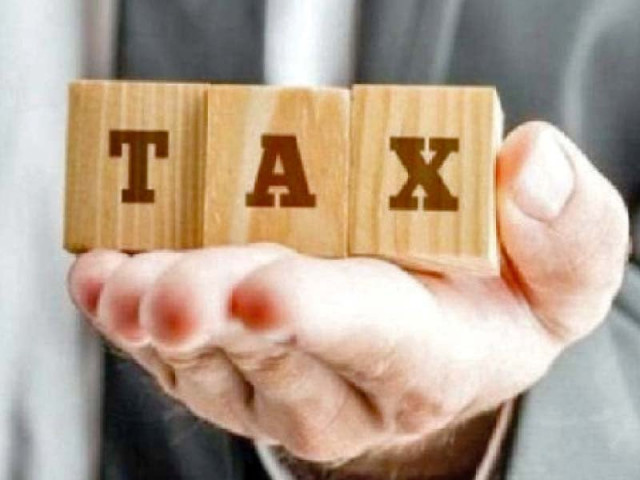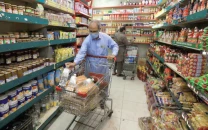The value-added tax conundrum
True potential of sales tax is at least double the amount collected last fiscal year

As per the Bureau of Statistics, Pakistan’s nominal GDP in the year ending June 2022 was Rs67 trillion, in which consumption numbers were as high as Rs63 trillion. The figures must now have gone way north due to very high inflation in the last eight months but let’s stick to the published numbers of June 30, 2022.
The largest spinner of tax by the FBR and provinces is the consumption tax levied in the form of sales tax on goods and services.
The FBR collected Rs2,530 billion in sales tax on goods. Provinces collected about Rs350 billion in sales tax on services and even if we add the federal excise duty (FED) of Rs320 billion, (which can be considered as a type of additional sales tax in its current form), the total sales tax on goods and services was about Rs3,200 billion against consumption of Rs63,000 billion, yielding an effective rate of 5% as opposed to the general rate of 17% prevalent at that time.
Even if we ignore the 20% of consumption being related to unprocessed agricultural crops and slaughtered animals, and subtract another 10% on account of poor people consumption of informal services and goods, the effective rate still works out to be 7.25%, which is almost 10% less than the headline rate.
Even for the most lenient estimates (after accounting for the reluctance of federal government to levy sales tax on POL products last year), the true potential of sales tax is at least double the amount collected in the last financial year.
Actually, this tax has the potential to transform the tax-to-GDP ratio from the current 9.5% to about 15% in three years on its own.
Though one can argue that more and more taxes are bad for growth, yet one cannot deny that fetching a reasonable amount of taxes is now a question of state security because of the yawning fiscal deficit we are facing.
Traditionally, it was assumed that indirect taxes are inflationary in nature and are blamed for a larger drop in output levels. However, the consumption taxes, such as the value-added tax (VAT) or general sales tax (GST), remain one of the most important means of taxation throughout the world.
Cutting-edge research on taxes is now gravitating towards lesser and lesser discussion of classification of taxes into direct and indirect taxes.
Many of the researchers have shown that unlike their theoretical representation, the incidence of so-called direct taxes also travels beyond the payer of tax and can cause as much inflation and loss of output as any other broad-based indirect tax.
For example, if we increase the income tax rate of a large corporation with significant market power, it can always pass this tax on to its customers, employees, shareholders, suppliers or lenders by re-negotiating terms of contracts.
A tax on cigarettes of father can very well translate into cut-down on ice cream and candies of his son, rather than having an impact on the consumption of cigarettes. This blurriness between direct and indirect taxes is now forcing more and more tax experts to think about optimum taxation in terms of broad-based taxes with least number of exemptions.
Our current sales tax system, levied in VAT mode, is in theoretical terms progressive in its structure, where there is a large-scale exemption on home-cooked food, home-sewn clothing, shelter and medicine. Moreover, now the normal packaged goods are subjected to 18% tax and high-end luxury consumption (luxury vehicles, expensive phones, etc) is subjected to 25% taxation.
Our failure to collect reasonably good money from this most important revenue resource has its historical, political, procedural and operational causes.
Historically speaking, the GST, before its conversion into VAT in 1990, was mainly collected as a single-stage tax from importers and manufacturers. Even today, almost 90% of this tax is coming from this historical resource.
On the contrary, in Europe, the evolution of VAT was on the basis of working backwards from retail outlets to import, mining or agriculture. This traditional tax collection base of our VAT system has never been allowed to become a true raw material-to-retail VAT system.
Politically, we introduced sales tax on services in 1997, on the basis of provincial laws, with collection-operation awarded to the FBR. Pakistan is one the five or six unique jurisdictions in the world where the tax base of VAT system is fragmented between the federation and provinces on the basis of goods and services (India, Canada and Australia being notable others).
After the 18th Amendment to the Constitution of Pakistan, the provinces started forming their own tax collection agencies (SRB, PRA, KPRA and BRA) one by one. These agencies then started growing in size and area of influence.
While other countries, including the EU, resolved the issue of fragmented tax base by the unification or integration of tax base, Pakistan opted for a unique mechanism of harmonisation of VAT.
Though a lot of effort has been put in by international agencies, the Ministry of Finance, FBR and provinces in the last decade, the cost of compliance with VAT is still on the rise.
Generally, a company doing business all over Pakistan is now required to file 60 VAT returns every year. In addition, there are legal issues in the definition of goods and services, different rates and procedures in every province, administrative issues in the adjustment of input taxes and inter-provincial dispute on the basis of taxation (origin vs destination debate).
Though for the time being, there is a broad consensus on these issues, reached in the National Tax Committee (NTC), yet in future the provincial governments can disrupt the consensus by unilateral actions, especially in new forms of goods and services. As a result, such harmonisation will always remain a temporary solution unless a constitutional amendment is made to resolve the issue permanently (India did it in 2017).
Administratively, the FBR is far away from having eyes on a complete value chain. The recent initiatives of Point of Sales (POS) monitoring, track and trace, and digital invoicing are steps in the right direction but at the moment remain pretty ineffective in enforcing reasonable compliance.
The EU and East Asian economies have developed far more robust and efficient systems and luckily such VAT systems are available even off the shelf and a little investment in these systems can bring significant dividends over a period of two to three years.
It appears that 80% of VAT collection is coming from some 40,000 manufacturers. A more disturbing number is the non-manufacturer/ non-importer VAT filers of 22,000 establishments.
It represents the wholesale and retail trade where the number of significant establishments in the country is not less than 2 million (almost 4 million commercial electricity connections).
Similarly, tax filing by 40,000 manufacturers in a country having almost 350,000 industrial connections also raises red flags.
The disappearance of importers by filing null (no further tax is payable) is not only disturbing but is a major source of flying invoices. The FBR with its limited workforce and resources cannot on its own revolutionise these numbers.
A robust IT system for VAT, with tracking of imports and manufacturing till the retail outlet, is the real solution which needs to be implemented on a fast-track basis, to pluck this low hanging fruit.
The writer is Revenue Lead, Revenue Mobilisation, Investment & Trade Programme (ReMIT), ex-member policy FBR, ex-additional secretary, Ministry of Industries and Production
Published in The Express Tribune, March 20th, 2023.
Like Business on Facebook, follow @TribuneBiz on Twitter to stay informed and join in the conversation.



















COMMENTS
Comments are moderated and generally will be posted if they are on-topic and not abusive.
For more information, please see our Comments FAQ